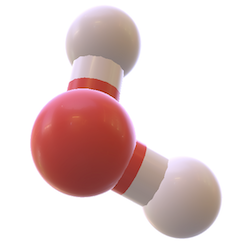Pathway: Acetylation
Acetylation
Acetyl-CoA + an arylamine = CoA + an N- acetylarylamine
NATs are cytosolic and in humans, 2 isoforms are expressed, NAT1 and NAT2. A third isoform, NATP, is a pseudogene and is not expressed. The NAT2 gene contains mutations that decrease NAT2 activity. This mutations was first seen as slow acetylation compared to the normal, fast acetylation of the antituberculosis drug isoniazid. Incidence of the slow acetylator phenotype is high in Middle Eastern populations (70%), average (50%) in Europeans, Americans and Australians and low in Asians (<25% in Chinese, Japanese and Koreans). N-acetylation and methylation pathways differ from other conjugation pathways in that they mask an amine with a nonionizable group so that the conjugates are less water soluble than the parent compound. However, certain N-acetlylations facilitate urinary excretion.
N-acetylation occurs in two sequential steps via a ping-pong Bi-Bi mechanism. In the first step, the acetyl group from acetyl-CoA is transferred to a cysteine residue in NAT, with consequent release of coenzyme-A. In the second step, the acetyl group is released from the acetylated NAT to the substrate, subsequently regenerating the enzyme.
The very nature of many chemicals that make them suitable for uptake by these routes, in other words their lipophilicty (favours fat solubility) is also the main reason organisms have developed mechanisms that convert them to hydrophilic (favours water solubility) compounds which are readily excreted via bile and urine. Otherwise, lipophilic chemicals would accumulate in the body and overwhelm defense mechanisms. This process is called biotransformation and is catalyzed by enzymes mainly in the liver of higher organisms but a number of other organs have considerable ability to process xenobiotica such as kidneys, gut and lungs. As well as xenobiotics, many endogenous compounds are commonly eliminated by this process.
This mechanism is of ancient origin and a major factor for its development in animals is plants. Most animals are plant eaters and thus are subject to a huge variety of chemical compounds which plants produce to stop themselves being eaten. This complex set of enzymes have several features which make them ideal for biotransformation;
(1) metabolites of the parent chemical are usually made more water soluble so it favours rapid excretion via bile and urine
(2) the enzymes possess broad and overlapping specificity to be able to deal with newly exposed chemicals
(3) metabolites of the parent generally don't have adverse biological effects.
In the real world however, all these criteria have exceptions. Many chemicals are transformed into reactive metabolites. In pharmacology, the metabolites of some parent drugs exert the desired pharmacological effect but in the case of polycyclic aromatic hydrocarbons (PAHs), which can undergo epoxidation, it results in the formation of an electrophile which can attack proteins and DNA.
Metabolism of xenobiotica occurs in several steps called Phase 1 (functionalization) and Phase 2 (conjugation). To improve water solubility, a functional group is added to or exposed on the chemical in one or more steps (Phase 1) to which hydrophilic conjugating species can be added (Phase 2). Functional groups can either be electrophilic (epoxides, carbonyl groups) or nucleophilic (hydroxyls, amino and sulfhydryl groups, carboxylic groups) (see picture).
Once chemicals undergo functionalization, the electrophilic or nucleophilic species can be detrimental to biological systems. Electrophiles can react with electron-rich macromolecules such as proteins, DNA and RNA by covalent interaction whilst nucleophiles have the potential to interact with biological receptors. That's why conjugation is so important as it mops up these potentially reactive species.
Many chemicals, when exposed to certain metabolizing enzymes can induce those enzymes, a process called enzyme induction. The effect of this is that these chemicals accelerate their own biotransformation and excretion. The reverse is also true where some chemicals cause enzyme inhibition. Some other factors that alter enzyme levels are sex, age and genetic predisposition. Between species, there can be considerable differences in biotransformation ability which is a problem faced by drug researchers interpreting toxicological results to humans.
At the same time, all of these processes are tightly integrated. Intermediates in reactions of energy generation are starting materials for biosyntheses of amino acids and other compounds, broad-specificity oxidoreductase enzymes can be involved in both detoxification reactions and biosyntheses, and hormone-mediated signaling processes function to coordinate the operation of energy-generating and energy-storing reactions and to couple these to other biosynthetic processes.
